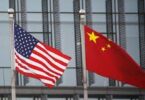SAAD ALI AL-QAHTANI
ince 2010, China has become the largest oil importer in the world. Its rapidly emerging economy and growth indicators suggest that it will continue to improve its global position and attain further economic superiority as soon as the mid-21st century. Accelerated trade expansion, which relies on markets in need of considerable structural reforms, will force China to adopt more secure policies to facilitate its access in small markets and larger ones in Europe.
China’s competition with great powers like the United States (U.S.) and India has always been a source of friction, especially in regions where China is extending its naval influence. The Middle East is a particularly sensitive area because of the United States’ long-standing dominance over political decisions in the region.
If the recent China-Iran deal, which made headlines because of its timing and massive investment of almost $400 billion, successfully fulfills its trade and economic objectives, China will indeed attain significant economic sway across the globe.
However, the economic objective might not be the sole motivation for China in this deal. In fact, China has been very cautious in its trading relations with Iran for a long time because of the continued pressure that U.S. sanctions exerted on the Iranian economy. For example, since 2005, the average Chinese investment in Iran never exceeded $1.8 billion a year, which is markedly less than its investments in Saudi Arabia and the UAE. It is very likely, however, that China was looking for a country in the Middle East where it can cultivate political and economic leverage, and Iran was ready and willing.
As China proceeds with its Belt and Road Initiative (BRI), it continues to assert the economic importance of the project and the sincerity of its intentions in carrying it through. Iran’s geographic location at the center of land and maritime trade routes makes it a key component for the execution of the project, as it can also serve as a strong connection between China and Central Asia especially considering the United States’ withdrawal from Afghanistan and Russia’s inability to meet the developmental needs of these countries. China’s intent on making more connections in the Central Asian region was confirmed in statements by Chinese government officials, who emphasized Iran’s importance in the Belt and Road Initiative and highlighted China’s commitment to protect the BRI by empowering more countries like Iran.
Given that China, India, and Russia are all competing to increase their influence and gain a bigger economic footprint in Central Asia, it is only natural that Beijing would want strong allies in the region. And with more countries benefitting from the massive BRI projects, the geopolitical ties Iran enjoys with Central Asian countries will be a great asset to China in matters of trade relations and logistic cooperation, especially Pakistan, Afghanistan, and Nepal. Just recently, Iran announced the launch of two new trade corridors between Iran and Central Asian countries, the first is the Kyrgyzstan-Tajikistan-Afghanistan-Iran (KTAI) route and the second is the Iran-Afghanistan-Uzbekistan corridor.
However, President Biden’s announcement that the United States would be withdrawing from Afghanistan by mid-September 2021 could mark a new phase of uncertainty in Central Asia. For China, the decision means more economic and strategic gain as Afghanistan enjoys more stability. For Russia, the potential power vacuum will help revitalize its power by building allies in the region and deterring extremists from dragging it into a new conflict. Iran is also very likely to applaud the American decision given its substantial security interests in Afghanistan, which Tehran has long protected either through hard power (supporting anti-U.S. insurgents) or soft power (promoting Shia ideology). Despite their shared views, Russia and China might be apprehensive of the fact that Iran, which shares borders with Afghanistan, is the more likely of the three to have a stronger economic and security influence over its neighbor.
From a geopolitical standpoint, the renewed Iran-China relationship underscores Beijing’s resolve to circumvent and confront U.S. pressures, and the Chinese State Councillor and Foreign Minister Wang Yi confirmed this during his last visit to Iran when he stated that China consistently opposes the unreasonable and unilateral sanctions imposed on Iran by other countries because some are based on lies and false information and violate international law. Wang also declared these sanctions as immoral, unpopular, and an affront to human conscience. He confirmed that China is prepared to work with Iran and other countries to jointly oppose bullying from other powers, uphold international equity and justice, and defend the basic norms of international relations.
China went on to further challenge the U.S. by announcing its support for Iran’s reasonable demands concerning the Joint Comprehensive Plan of Action (JCPOA). Adamant to protect the flow of its oil imports from Iran, China is anxious to avoid regional crises and conflict, as well as U.S. pressure. Iran, in turn, seeking to diversify its foreign economic relations and challenge the United States’ position as the security provider for Gulf countries, was quick to move closer to Beijing in both economic and political spheres. For Iran, the Sino-Iranian partnership reflects Iranian resistance, the United States’ decline as a global power, and the Western powers’ failure to honor past agreements.
On the other hand, China’s other partners in the Gulf, who view Iran as a major cause of instability in the region, believe that China should assist them in capping Iran’s ambitions. China, however, believes that supporting the pre-Trump Iranian nuclear deal, while implementing the economic agreement, will give it as much leverage in the Gulf as the U.S. and Europe.
The deal also serves China’s interests in the Indian Ocean. 80 percent of China’s oil imports and 95 percent of its trade with the Middle East passes through the Indian Ocean and the Strait of Malacca. Even though China’s navy is considered the largest in the world, as per the Pentagon’s latest annual report in 2020, China still faces geopolitical and security challenges to its naval superiority that could be solved by creating an extensive network of cooperating foreign ports to secure its economic interests. The Sino-Iranian agreement stipulates the joint development of two ports in Iran, the port of Chabahar and a new oil terminal near the Jask port, south of the Strait of Hormuz shipping route. These two ports, in addition to the Gwadar Port in Pakistan and the Kyaukpyu Port in Myanmar, will be the most prominent in China’s chain of ports on the Indian Ocean. The superiority of China’s maritime capabilities, upon which it will rely if future confrontations with the U.S., Japan, India, and Australia should occur, is likely to alter the balance of power in the Indian Ocean, especially as China expands its presence and economic ties with Iran.
The Sino-Iranian agreement could provide an avenue for future cooperation between Iran, China, and Russia that would enhance Iran’s role and influence in the Middle East and Afghanistan. Only time will tell if the agreement is sufficient in increasing Iran’s capability to confront American pressure regarding nuclear negotiations and assist in making China’s growing ambitions to boost its role in the Middle East a reality.
Saad Ali Al-Qahtani is a Saudi researcher and analyst specializing in strategic affairs. He holds a master’s degree in international relations. Follow him on Twitter @saadmosre.
Courtesy: (carnegieendowment)






